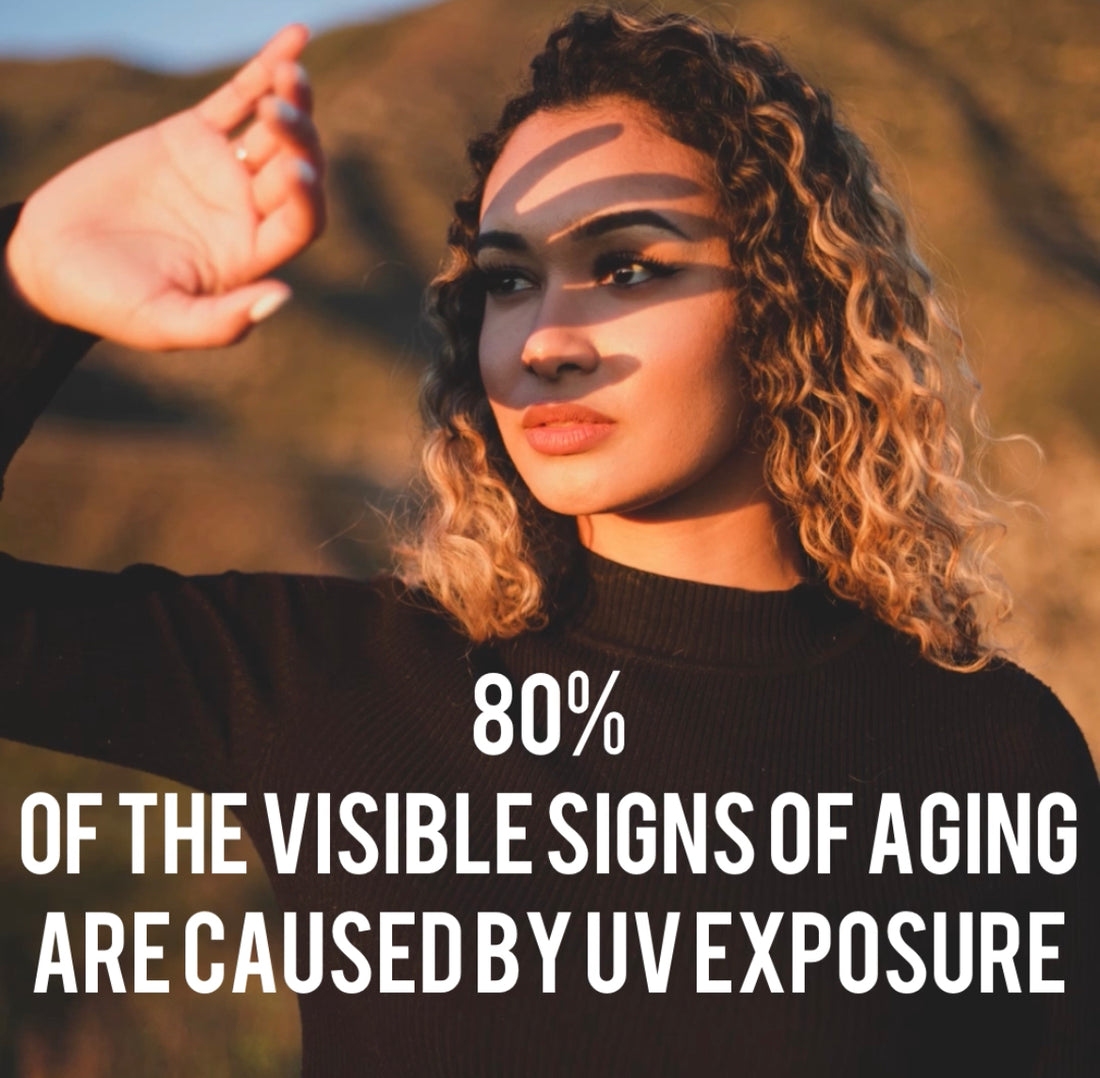Sun Damaged Skin

This happens secondary to the damaging rays of the sun, specifically ultraviolet rays. The lifetime barrage of sunlight on our skin changes the cells within different layers of the skin.
In the epidermis (superficial layer of skin) sunlight can cause pigment changes by damaging melanocytes and create free radicals (damaging molecules) that further damage surrounding cells and proteins. In the worst of situations continued cell damage from the sun can eventually develop skin cancers like melanoma.
In the dermis (deeper layer of skin) sunlight wreaks havoc on important protein structures within the skin. Collagen (a major structural component of skin) can be damaged by the sun over time and lead to weakening and changes in the protein structure of collagen. As collagen weakens the skin looses its tensile strength and leads to wrinkles, sagging and unhealthy appearing skin.
Quick Facts about Ultraviolet radiation
“Ultraviolet” derives its name from the spectrum of colors our eyes can see. Colors come in different frequencies. The highest frequency visible to our eyes is violet. So, “ultraviolet” is a higher frequency of light that exists, but our eyes can’t see.

Ultraviolet radiation- comes from the sun in two forms UVA and UVB radiation
UVA radiation- is the cause of skin aging, dark spots and skin damage
UVB radiation- is the cause of sunburns
- UVA (remember A for Aging)- has a longer wavelength that penetrates deeper into the dermal layer of skin. This type of radiation even penetrates clouds on an overcast day.
- UVB (remember B for Burning)- has a shorter wavelength and damages the epidermal (superficial) layer of skin. This type of radiation is more likely to burn the skin and without proper sun protection is associated with damaging the cells in the epidermis leading to skin cancers.
Sun protection
Sun protection is accomplished by blocking the damaging effects of sunlight’s ultraviolet rays.
There are two main ways to protect your skin. Chemical and Physical protection.
Chemical sunscreens contain ingredients (such as oxybenzone) that absorb ultraviolet rays and undergo a chemical reaction to reduce the harmful rays from penetrating the skin. Those concerned about dark spots should know that the exothermic reaction caused by chemical sunscreens can worsen spots and should consider physical sunscreen protection.
Chemical sunscreens can take up to 15-20 minutes to become effective.
Physical sunscreens are products (such as zinc oxide) that physically block and scatter ultraviolet sunrays before they can hit the skin. These types of sunscreens may work better for skin types that are sensitive to chemical sunscreens.
Physical sunscreens work immediately.
Final Thoughts about the Sun
The sun and its effects on our skin are not all bad. In fact, one incredibly important interaction is our skin’s ability to convert sun energy into Vitamin D.
Vitamin D is manufactured in the skin by converting sunlight energy. It has a number of important jobs in our body, most notably bone strength, and may even be linked to overall health and longevity.
Getting out in the sun for 5-30 minutes during midday twice a week has been recommended by the National Institute of Health. But be sure to coverup with sunblock lotion (at least SPF 15) after you get your dose of sun!
Try our Repair Night Cream to diminish the appearance of skin aging and sun spots!

